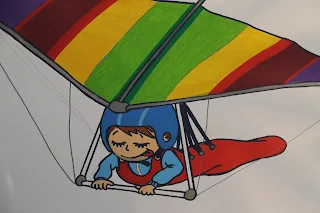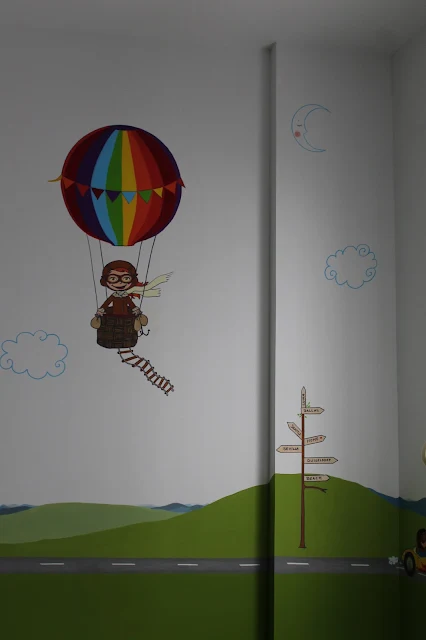Hoy os traigo dos mujeres muy interesantes, "Las Curie", madre e hija. Científicas, investigadoras y premiadas con el Premio Nobel, ¡¡casi nada!!
A Marie, la madre, la conoce prácticamente todo el mundo, pero a su hija Irene ¿La conocíais?
¿Y a su hija Eve?
Esa os la dejo para que investiguéis ;)
Marie Curie, fue una científica polaca, nacionalizada francesa. Pionera en el campo de la radiactividad, fue la primera mujer en ocupar el puesto de profesora en la Universidad de París y la primera persona en recibir dos premios Nobel en distintas especialidades —Física y Química—
Así mismo, fue la primera mujer que obtuvo tal galardón. Al principio, el Comité pretendía honrar solamente a los científicos varones, Pierre y Henri, negándole reconocimiento a Marie por ser mujer. Uno de los miembros, el matemático Magnus Gösta Mittag-Leffler, avisó a Pierre de la situación y Pierre dijo que rechazaría el Premio Nobel si no se reconocía también el trabajo de Marie. Después de su queja, la incluyeron en la nominación.
Nace en Varsovia en 1867. Estudió clandestinamente en la «universidad flotante» de Varsovia, ciudad donde también comenzó su formación científica.
En 1891, a los 24 años, viaja con su hermana a París, donde culmina sus estudios y lleva a cabo su trabajo científico más sobresaliente. Compartió el premio Nobel de Física de 1903 con su marido Pierre Curie y con el físico Henri Becquerel.
Años después, ganó el premio Nobel de Química de 1911.
Nombró el primer elemento químico que descubrió, el polonio, como su país de origen.
Sus logros incluyen el desarrollo de la teoría de la radiactividad (un término que ella misma acuñó), técnicas para el aislamiento de isótoposradiactivos y el descubrimiento de dos elementos —el polonio y el radio—. Bajo su dirección, se llevaron a cabo los primeros estudios en el tratamiento de neoplasias con isótopos radiactivos. Fundó el Instituto Curie en París y en Varsovia, que se mantienen entre los principales centros de investigación médica en la actualidad.
Durante la Primera Guerra Mundial creó los primeros centros radiológicos para uso militar. Murió en 1934, a los 66 años, de leucemia, debida a la exposición a la radiación por guardar tubos de ensayo con radio en los bolsillos durante la investigación y en la construcción de las unidades móviles de rayos X de la Primera Guerra Mundial.
Su hija, Irene Joliot Curie,estudiará física y química en la Universidad de París durante la Primera Guerra Mundial y fue asistente del departamento de radiografía de diversos hospitales franceses. Ya acabada la guerra fue nombrada ayudante de su madre en el Instituto del Radio de París, posteriormente conocido con el nombre de Instituto Curie.
Se casa en 1926 con el asistente personal de Marie, Frédéric Joliot, tomando su apellido. En 1935, tras la muerte de su madre, fue nombrada directora de investigación de la Fundación Nacional de Ciencias tras postularse en tres ocasiones por sus principios feministas (al contrario que su madre, que tras el primer rechazo en la membresía por ser mujer y polaca, desestimó la opción ). Al año siguiente obtuvo el puesto de subsecretaria de Estado Francés en investigación científica.
Junto con su marido inició sus investigaciones en el campo de la física nuclear y buscando la estructura del átomo, en particular en la estructura y proyección del núcleo y que fue fundamental para el posterior descubrimiento del neutrón en 1932, y en 1934 consiguieron producir artificialmente elementos radiactivos.
En 1935, ambos científicos fueron galardonados con el Premio Nobel de Química «por sus trabajos en la síntesis de nuevos elementos radiactivos». Los dos trabajaron en las reacciones en cadena y en los requisitos para la construcción acertada de un reactor nuclear que utilizara la fisión nuclear controlada para generar energía mediante el uso de uranio y agua pesada.
Irène Joliot-Curie murió en 1956, al igual que su madre, a consecuencia de una leucemia, resultante de una sobreexposición a la radiación en el curso de su trabajo.


















































